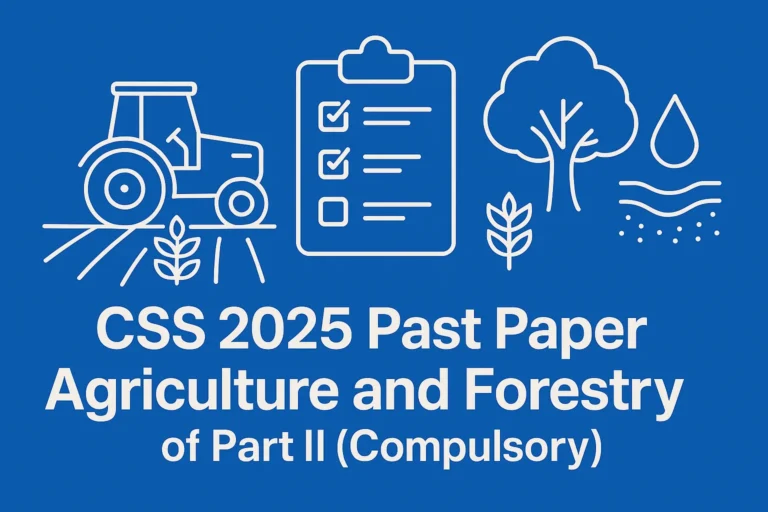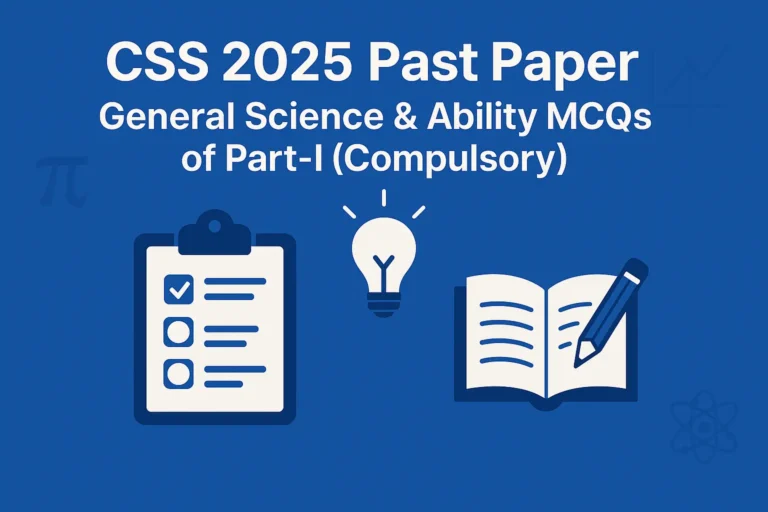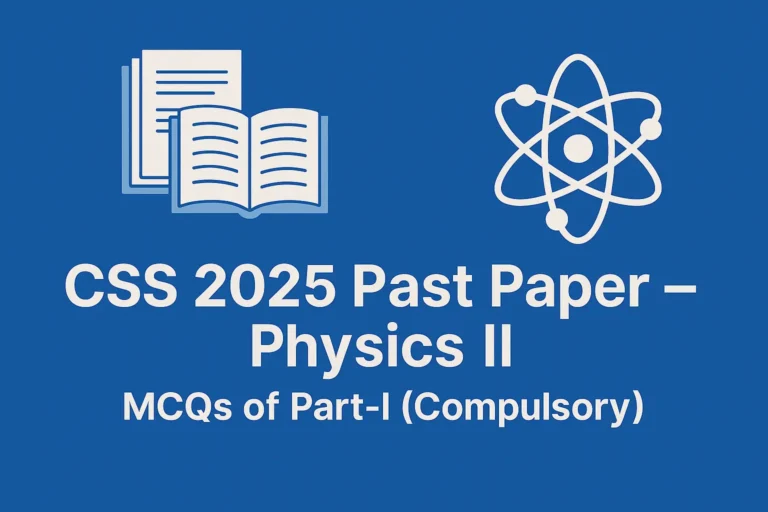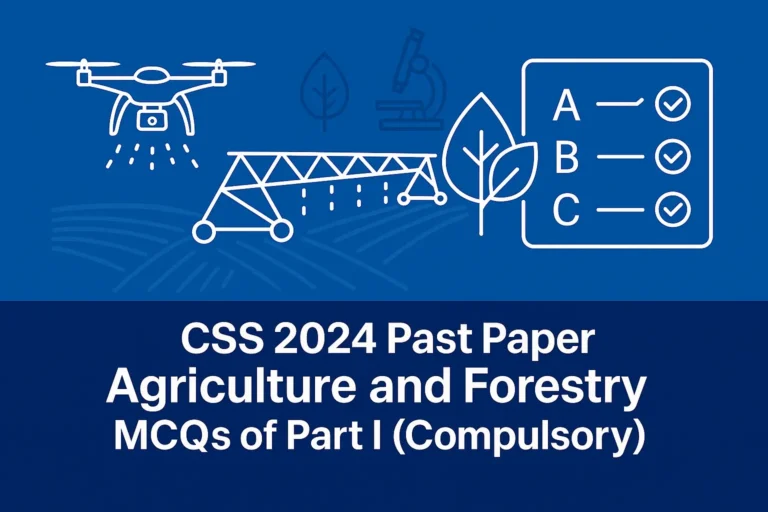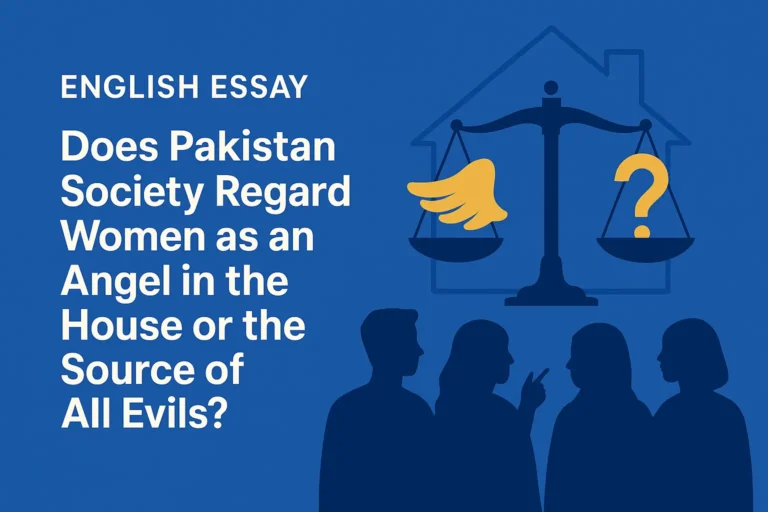System of Education Must Assume Some Responsibility of National Failures
(English Essay – CSS & PMS)
Outline
- Introduction
- Unachieved Educational Objectives
- Ideals of National Integration
- Socio-Economic Divide and Its Effects
- Political and Regional Grievances
- Economic Values vs Islamic Ideals
- Literacy Rate and Poverty
- Ghost Schools and Monitoring Failures
- Lack of Logic and Independent Thinking
- Duality of Education and Social Inequality
- Conclusion
Introduction
Pakistan has made several education policies over the years, like the National Education Policy from 2009 to 2015. These policies had some clear goals, but most of them were not fully implemented.
Unachieved Educational Objectives
One thing that stays the same in almost all the policies is the focus on the values that were important when Pakistan was made. They want to build a strong national identity and protect the Islamic way of life. Education is seen as a tool to teach values like truth, justice, kindness, and brotherhood, all based on Islam. These are reasonable goals, but the country has yet to reach them. A big reason is the education system itself; it’s just not working the way it should. So it’s essential to look deeper and figure out why we’re still falling short.
Ideals of National Integration
This problem isn’t just about education. It also has to do with things like the economy, politics, society, and religion. The values that were meant to shape Pakistan, like justice, fairness, and the rule of law, have not been fully upheld. After independence, these goals were largely ignored, and because of that, many people, especially the poor, feel left out, frustrated, and like they have no hope.
Socio-Economic Divide and Its Effects
The gap between the rich and poor is growing wider every day. Rich people live in comfort and have everything they need, while the poor are still struggling just to survive. The way the economy works right now mostly helps the rich, making their lives easier. But at the same time, it makes things more complicated for poor people and pushes them further into poverty. This cleavage does not favour the realisation of Islamic values and contributes to national failures.
Political and Regional Grievances
When it comes to national unity, a lot of the blame falls on economic and political issues. The provinces are unhappy with how resources are shared from the national pool. They feel the distribution is unfair, which creates tension and weakens the sense of unity in the country. Provinces like Sindh, Balochistan, and NWFP express grievances about the current criteria. Military rule, lack of democratic traditions, and the absence of national cohesion are key contributors to integration failure.
Economic Values vs Islamic Ideals
After Pakistan was founded, no serious effort was made to build a fair and equal society based on Islamic justice, also known as Adal. The idea was there, but it was never fully implemented. Growth values replaced moral ones, leading people to pursue economic gains over ethics. As a result, Islamic values took a backseat in society. The education system has to take some responsibility for failing to promote these essential values.
Literacy Rate and Poverty
When Pakistan became independent, the literacy rate was around 24%. Now it’s about 55%, but some international reports say it’s lower. Literacy isn’t just about being able to read and write; it’s affected by factors such as poverty, economic conditions, and societal attitudes towards education. Children from poor families often drop out due to economic pressures. In rural areas, they help in farming; in urban zones, they join factories or workshops.
Ghost Schools and Monitoring Failures
Many schools exist only on paper, also known as ghost schools. These persist due to a lack of supervision. Monitoring personnel are often in connivance with this system. Uninspiring and oppressive teaching at the primary level also discourages continuation. Much blame lies with the Education Department for its failure to uplift basic education.
Lack of Logic and Independent Thinking
Our system does not arm students with logic. There is little scope for why, how, when, and where in the education system. Students cram material instead of understanding it. Their mental outlook remains narrow, which is a key flaw in our education system.
Duality of Education and Social Inequality
Education remains poor in quality, especially in public schools. It has led to the rise of English-medium schools like Beacon House and City School, which follow a different syllabus. It creates two educational streams, one for the elite, one for the underprivileged. This duality leads to inequality in opportunities and competitive advantage.
Conclusion
Public schools need to improve the quality of education they provide. The focus should be more on how well students are learning, not just on numbers. The education system is mainly responsible for the poor quality and many of the country’s problems. It needs a complete overhaul to fix these issues.
Click here to find more articles on English Essay.

